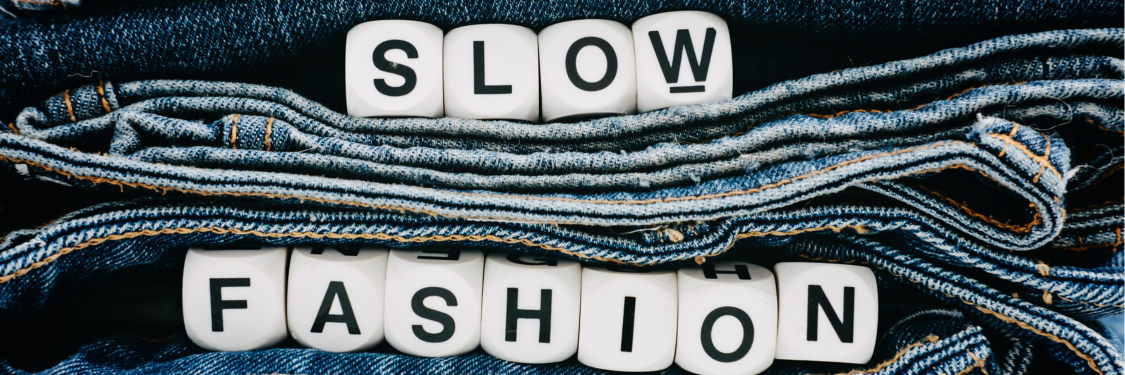Slow fashion: An ethical alternative to fast fashion
Fast fashion has accelerated and it’s time to put on the brakes.

It’s been said before – in a world of prolific social media and influencers, fast fashion and ultra-fast fashion companies are rising in popularity – but with huge cost to the planet. Aussies are dumping a massive 6000 kilos of clothing and fabric waste into landfill every 10 minutes. For the workers who produce the clothing, conditions are bad, with Oxfam Australia saying that typically “just 40 cents of the price of a $10 t-shirt goes towards the wages of workers who made the t-shirt”. And the industry has been described by the United Nations Environment Program as the second-biggest consumer of water in the world.
So what’s the alternative?
Slow fashion.
At its core, the slow fashion movement is an approach that embodies awareness of the impacts of fast fashion manufacturing on workers and the planet. The movement advocates for the production of clothing that is ethical, durable, and timeless in its design – while also encouraging the recycling of used fashion pieces. On slow fashion, writer Francine Vito states: “Its defining point is that it zeroes in on the problem of overproduction and overconsumption”. The movement is a return to simpler times when wardrobes weren’t constantly changing and clothing was made to last – not fall apart after a few washes.
Michaela Ryan is the owner of online fashion business Vintage Arian – an example of the slow fashion model. What motivated Michaela to start a second-hand clothing business was her love of op-shopping – she always found a way to add second-hand items to her wardrobe. Michaela said that she wanted to use her business as a way of making “a difference in the perception of what buying second-hand really is.”
“I still loved fashion, but I wanted to do it ethically,” she said.
“I wanted a win-win-win situation: a win for my customers, a win for the environment, and a win for the charities I purchased from.”
These days there is a lot of information out there to help you make more informed fashion purchases. Good On You is an easy to navigate website that enables you to check the rating of how your favourite brand fares in terms of how ethical their practices are in relation to the environment, workers and animals. An explanation of how brands are rated is provided on the website for further clarification. They also have an app you can download to your phone. If you’re on Instagram, there are loads of slow fashion companies and advocates you can follow and get tips and inspiration from. Slow Fashion Movement advertises online slow fashion workshops, in addition to a plethora of informative posts.
There are easy and fun ways to acquire fashion items without adding to environmental and social issues. A clothes swap party is an example of a fun way of contributing to the slow fashion movement. On a yearly basis, one of the girls in my friendship group will host a clothes swap party at their place. In the lead-up to the event, the attendees sift through their wardrobes and pull out anything they no longer wear or need. On the day of the swap, bags of preloved items get piled into a mound and we have a ball sifting through the pile for new treasures while enjoying a drink, nibbles, laughs and chats. It’s a fantastic way of reducing waste and a way of acquiring ‘new’ fashion quickly without the harmful effects of fast fashion.
Other ways you can contribute to the slow fashion include mending, upcycling, keeping wardrobe items to a minimum (mix and match items are a great idea), buying vintage clothes, and sewing your own clothes. Might be time to finally get that sewing machine!
Slow fashion blogger Leah Musch has these words of advice for aspiring slow fashion champions: “Keep asking questions, support brands who are doing things right and embrace the glory of being an outfit repeater.” The founders of Surya – a company passionate about ethical production – include this slow manifesto on their website: “Buy better. Treat it well. Wear it more.” These are simple yet effective words.
With the cost of living perpetually escalating, the inclination to purchase cheap fashion items online is strong. But with an awareness of the hurtful effects of fast fashion, and a mind to the kinder alternatives – we can help to slow down its effects.
By Elissa Pizzata
Search for other blog topics:


